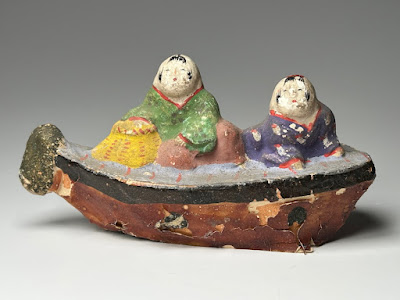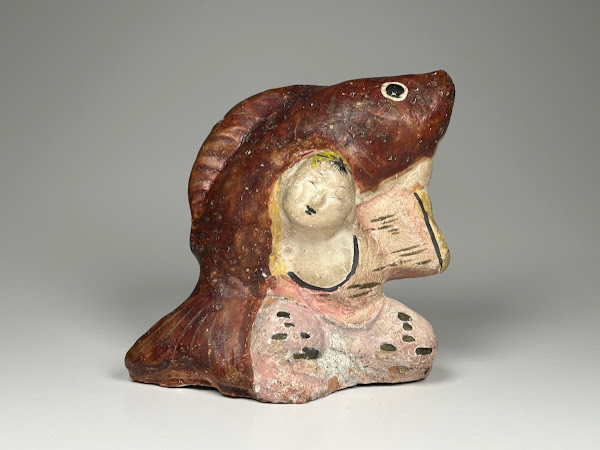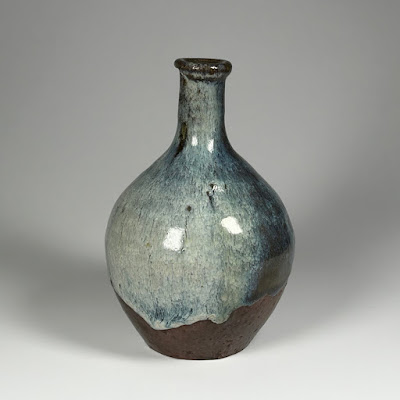堤人形:花笠踊り Tsutsumi doll: A Hanagasa Dancer

19世紀 19th century 高さ height: 18.3 cm 東京・有楽町で月2くらいでやっている大江戸骨董市にて、これは見事な堤人形だと感じ入り購入。わたしは古人形についてまったくの初心者で見方もおぼつかないのだが、人物の造形とバランス、花笠をもつ手の躍動感、表情、華やかな色づかい・・・ともかくすべてがすばらしいとおもう。製作年代は江戸後期と言ってまちがいないだろう。ただの土人形と言ってしまえばそれまでだが、西の伏見、東の堤と言われるだけあり、江戸文化の高度の結実と言っていいくらいの品格がある、、、とおもう。 I thought in the Oedo Antique Market, held twice a month in Yurakucho, Tokyo, that this must be a superb vintage Tsutsumi doll. Though I am just getting started to collect old dolls, the face, coloring, movement of the hands with the flower hats ( hanagasa ), body balance, and simply speaking, everything is excellent. It was doubtless made in the late Edo period. It is a mere clay (ceramic) doll, but this old Tsutsumi possesses a certain dignity that was only possible during the height of Edo culture. 日本髪の生え際の表現などは堤らしさがよく出ているとおもう。下半身と両花笠とに蘇芳(赤の染料)がふんだんにつかわれる。古堤人形を指して、浮世絵を立体化したかのようだ、との評があるがまさにそのとおりだ。 I think the style of the hairline is characteristic in Tsutsumi dolls. The color of two flower hats and ...



